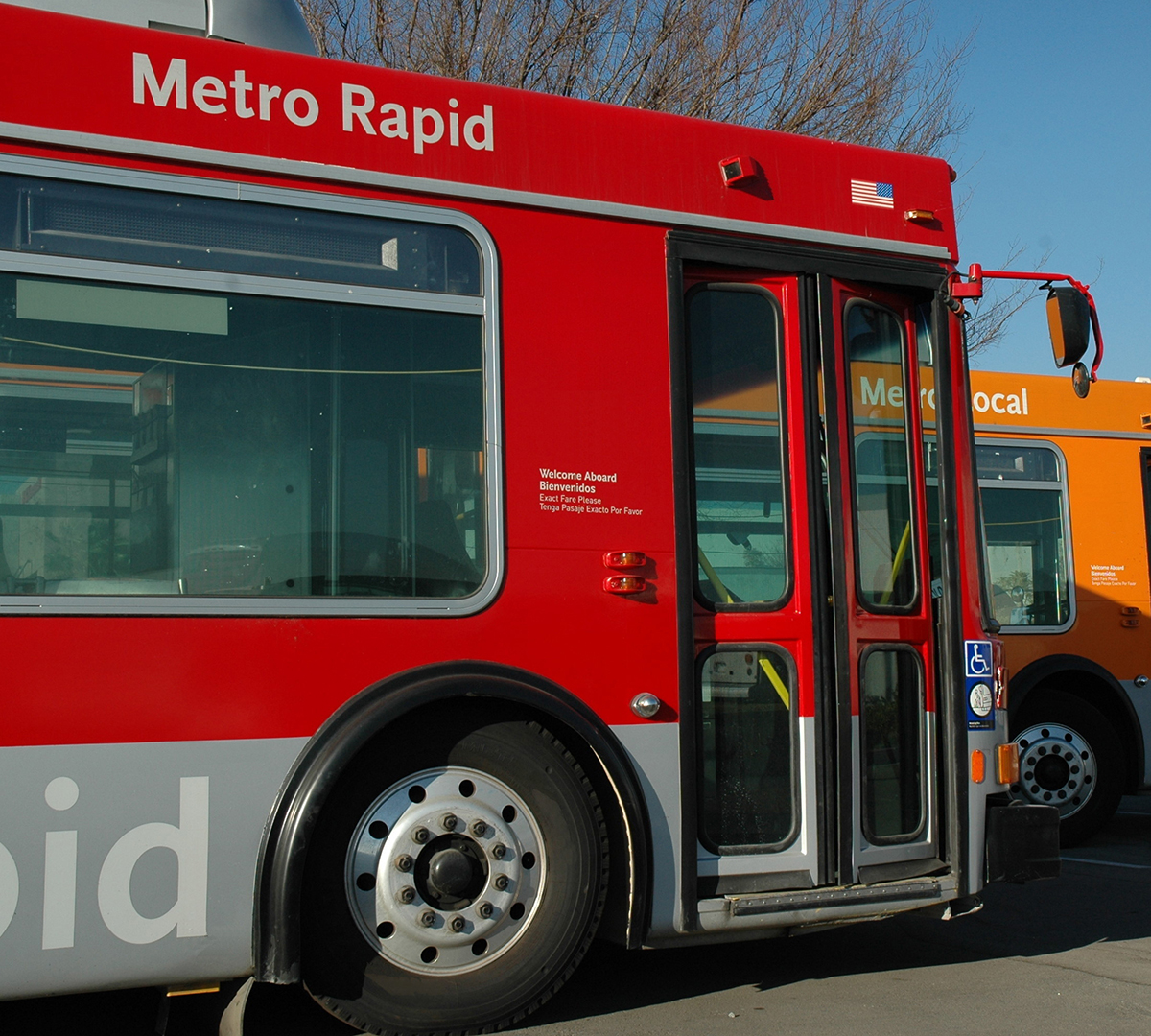“At night time, from 1 a.m. to 5 a.m., the homeless have nowhere to go,” a man who posted a video of a downtown-to-Santa Monica Metro bus filled with slumbering homeless told the Los Angeles Fox affiliate. “So they all get on the buses and they ride the buses all night. And no, you cannot sit down.”
The man, who wants to remain anonymous, says the buses can fill up during the overnight hours, leaving the paying patrons standing in the aisles. The video shows several curled-up riders occupying seats built for two.
“People be fighting to get on the bus, just to secure a seat,” he said.
Filmed while wearing a hoodie and a stars-and-stripes bandana across his face, the man said the system has to improve “fare enforcement” so those who pay can use the seats. He’s probably on to something there more than he even knows.
Crime on public transit systems is not a new problem. The same Fox affiliate reported in October 2022 that Metro was “exploring ways to keep (the) homeless from sleeping on” its trains and buses, as there were “growing numbers of homeless people” seeking shelter not just on the rolling stock but also in rail stations.
A year later, Metro was still trying “to craft (a) homeless action plan” that would “address the more than 800 unhoused individuals who use trains and buses as mobile shelters and sleep in the corners of stations and depots,” says the Los Angeles Daily News.
Metro should not have been caught by surprise. It’s been known for more than a decade that “a substantial number of the unhoused” have “used the bus as their main form of night-time shelter throughout the year, and that some have ridden the bus for shelter for many years.”
It’s hard to function as a civilized city when the transit system is in effect taken over by non-paying riders who have no destination but need a place to sleep. That’s not intended as an advocacy for, or even defense of, public transit. But since it does exist, it should, at a minimum, function as intended. Metro CEO Stephanie Wiggins is not wrong to say it’s “a transit agency, not a social services agency.”
When not dodging the homeless, patrons also have to be vigilant while on board trains and buses so that when their ride is over, they will still have their health and all their belongings. Public transit has become in too many instances a crime scene on wheels.
Between 2020 – when ridership collapsed due to the pandemic – and 2023, crimes reported to police agencies that cover the Los Angeles Metro “and its properties increased by 54.7%,” ABC News reported last month. Over that same period, “violent crimes on MTA properties rose 10.9%.” KNBC in Los Angeles says that in the first three months of this year, “the number of total crimes within the LA Metro system surged more than 65%.”
Drivers have had machetes pulled on them, and urine and feces thrown their way, a 30-year veteran operator told ABC. One Metro patron who takes the train said in a first-person account published two years ago in the Los Angeles Timesthat he had seen “people getting jumped,” has watched passengers argue, saw one man have “his phone stolen out of his hands,” and witnessed people taking meth and “doing cocaine off of a book.”
“You name it, I’ve seen it,” he said.
Not even the Metro stops are safe. People are robbed, stabbed and shot, sometimes to death, in train stations. Los Angeles is no outlier. The Bay Area Rapid Transit system also has a crime problem. Felony arrests on BART trains increased 62% in 2023 over the year before.
BART attributes the increase in arrests to the agency “more aggressively recruiting new officers and ensuring safety staff are riding more trains to increase their visible safety presence.” The percentage of riders who now report seeing BART police officers while on their commutes has “reached a record high of 20%,” according to the agency.
Meanwhile, Muni, which operates buses, light rail and the streetcars in San Francisco, is cracking down on fare evasions by inspectors who “are a huge part of our safety program,” says Director Jeff Tumlin in a KTVU San Francisco report. In Los Angeles, “non-destination travelers” on the Metro are being identified and removed, and Mayor Karen Bass has “directed an immediate surge of law enforcement personnel on Metro buses and rail cars and stations,” per news reports.
It’s all a start, because crime – the “bulk” of which is “committed by people who have not paid a fare,” says Gov. Gavin Newsom – in combination with filthy buses and trains, and a lingering pandemic hangover, have been crushing transit systems.
BART and Muni’s ongoing existence depends largely on transit tax that was just booted down the road, and though patrons are returning to the Metro, almost back to pre-pandemic numbers now, only a cockeyed optimist could find anything in the data to celebrate. Rider trips have been falling steadily since a peak in 2008.
If officials are unable to make significant and extensive improvements, the death spiral of public transit will only spin faster.
Kerry Jackson is the William Clement Fellow in California Reform at the Pacific Research Institute.


